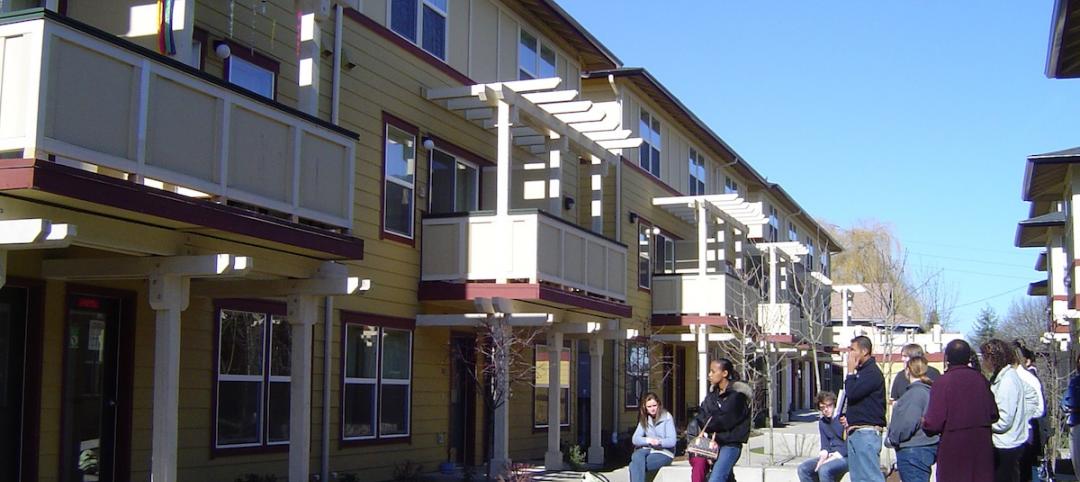The Fenestration and Glazing Industry Alliance (FGIA) has updated two documents addressing fenestration anchorage.
This is the first update to both documents: AAMA 2501-20, “Voluntary Guide for Engineering Analysis of Anchorage Systems for Fenestration Products” and AAMA TIR-A14-20, “Fenestration Anchorage Guidelines.” The former was originally written in 2006; the latter was created in 2010.
“These documents are companions, and both provide guidance on what needs to be considered to determine appropriate anchorage of fenestration products,” said Sarah Erickson (Wausau Window and Wall Systems), chair of the FGIA Fenestration Anchorage Systems Task Group in a news release. “AAMA 2501 establishes the information that a design professional will require to be able to analyze an anchorage detail. AAMA TIR-A14 outlines several types of analysis that a design professional will perform on the most common anchorage details for fenestration products.”
AAMA 2501 establishes the minimum requirements for a fenestration anchorage system for load resistance with an appropriate safety factor that is equal to or greater than the project-specific design pressure requirements. AAMA TIR-A14 offers engineering rules and guidelines in the designs of fasteners used in the connection of fenestration to the surrounding building conditions.
Both documents were revised to align more closely with one another, including updates to reference material and the addition of details pertaining to significance of use. Small, but crucial, equation revisions were also included in the 2020 version of AAMA TIR-A14, the release says.
Related Stories
Green | Apr 14, 2015
USGBC will recognize energy and water standards for the Living Building Challenge
This move means that projects achieving the energy and water requirements in Living Building Challenge will be considered as technically equivalent to LEED.
Codes and Standards | Apr 14, 2015
New York City preparing new codes for evacuation elevators
New York City’s Fire, Buildings, and City Planning Departments in New York are writing rules to govern occupant-evacuation elevators, reflecting a change in philosophy of how to evacuate people from skyscrapers in an emergency.
Codes and Standards | Apr 12, 2015
California imposes stringent new water standards
California is the first state to adopt standards that are more efficient than those set by EPA's WaterSense program.
Codes and Standards | Apr 12, 2015
Virginia surpasses Florida for strictest hurricane building codes
Virginia has edged out Florida as the state with the most stringent hurricane building codes, according to the Institute for Business and Home Safety’s “2015 Rating the States” report.
Codes and Standards | Apr 6, 2015
Industry groups petition for change order reform on federal projects
Nine design and construction associations ask for assurance that funds available for additional work.
Codes and Standards | Apr 6, 2015
DOE releases Better Buildings Workforce Guidelines
The guidelines are aimed at strengthening and streamlining commercial building workforce training and certification programs for workers in energy auditing, building commissioning, building operations, and energy management.
Green | Apr 3, 2015
Georgia may ban use of LEED on state buildings
Georgia's state legislature is considering a measure to require all state buildings to only use green building standards that permit the use of Georgia's lumber.
Codes and Standards | Mar 29, 2015
Elevator shafts a major source of heat loss in New York City
A typical New York apartment building loses thousands of dollars worth of energy every year from leaky elevator shafts that vent warm air at the top of the building and draw in cold air at the bottom, according to a new Urban Green Council report.
Green | Mar 22, 2015
6 myths holding back green building
Sustainable design has proven benefits, so why isn’t it more widely adopted?
Multifamily Housing | Mar 16, 2015
New Jersey Supreme Court puts control of affordable housing agency in the courts
The court said the state’s affordable housing agency had failed to do its job, and effectively transferred the agency's regulatory authority to lower courts.














